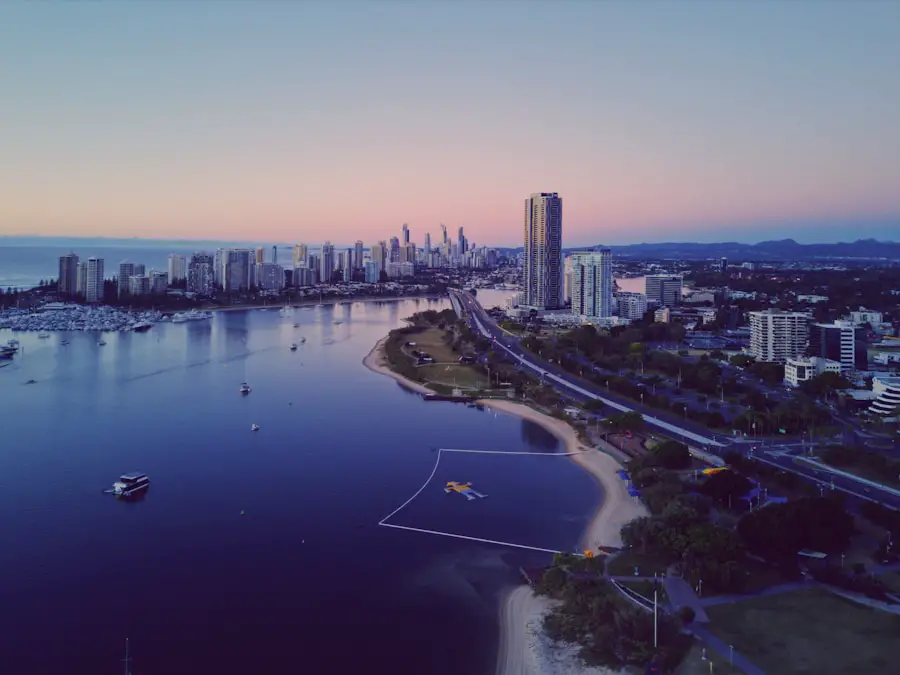Asia is a vast continent characterized by an incredible diversity of climates, ranging from the frigid tundras of Siberia to the tropical rainforests of Southeast Asia. This climatic variety is influenced by geographical features such as mountains, deserts, and bodies of water, which create distinct weather patterns across different regions. For instance, the monsoon season significantly impacts South Asia, bringing heavy rains from June to September, while East Asia experiences four distinct seasons, with cold winters and hot summers.
The climate in Central Asia is predominantly continental, marked by extreme temperature variations between summer and winter. Understanding the climate is crucial for travelers planning their trips to Asia. In countries like India, the northern regions can experience harsh winters, while the southern parts remain warm year-round.
Similarly, in Japan, the cherry blossom season in spring attracts numerous tourists, but this is also when the weather can be unpredictable. The climate not only affects travel plans but also influences local customs and activities. For example, many festivals in Asia are closely tied to seasonal changes, making it essential for travelers to consider the weather when planning their itineraries.
Key Takeaways
- Asia has diverse climates, with monsoon seasons in some regions and dry seasons in others, so it’s important to research the specific climate of the country you plan to visit.
- Peak tourist seasons in Asia vary by country, but generally occur during the dry and cooler months, such as from November to February in Southeast Asia and from April to September in East Asia.
- Off-peak tourist seasons in Asia, such as the monsoon season in Southeast Asia from May to October, can offer lower prices and fewer crowds, but may also come with heavy rainfall and humidity.
- The best time for outdoor activities in Asia is typically during the dry and cooler months, when hiking, trekking, and other outdoor adventures are more comfortable and enjoyable.
- Asia is home to a wide range of festivals and events throughout the year, from the colorful Holi festival in India to the lantern festivals in Thailand, offering unique cultural experiences for travelers.
Peak Tourist Seasons in Asia
Peak tourist seasons in Asia vary significantly from one country to another, often dictated by climate and local events. In many Southeast Asian countries, such as Thailand and Vietnam, the dry season from November to February sees a surge in tourist activity. This period is characterized by pleasant temperatures and minimal rainfall, making it ideal for beach vacations and cultural explorations.
In contrast, Japan’s peak season occurs during the cherry blossom bloom in late March to early April, drawing visitors eager to witness this breathtaking natural phenomenon. In India, the peak tourist season typically aligns with the winter months from October to March when the weather is cooler and more comfortable for sightseeing. The Golden Triangle—comprising Delhi, Agra, and Jaipur—sees a significant influx of tourists during this time.
However, it is essential to note that peak seasons often come with higher prices for accommodations and flights, as well as crowded attractions. Travelers should be prepared for long lines at popular sites and may need to book their plans well in advance to secure their desired experiences.
Off-Peak Tourist Seasons in Asia

Traveling during off-peak seasons can offer a unique perspective on Asia, allowing visitors to experience destinations with fewer crowds and often at lower costs. In many regions, such as Southeast Asia, the rainy season from May to October is considered off-peak. While heavy rains can occur, they are often interspersed with sunny periods, allowing for enjoyable exploration without the throngs of tourists.
For instance, Bali sees fewer visitors during this time, making it an excellent opportunity for those seeking tranquility amidst its stunning landscapes. In Japan, the summer months of June through August are typically less crowded compared to spring’s cherry blossom season or autumn’s foliage display. However, travelers should be aware that summer can bring high humidity and temperatures.
Despite these conditions, visiting during off-peak times can provide a more authentic experience of local life and culture. Additionally, many hotels and attractions offer discounts during these periods, making it an attractive option for budget-conscious travelers.
Best Time for Outdoor Activities in Asia
| Activity | Best Time | Location |
|---|---|---|
| Hiking | October to March | Himalayas, Nepal |
| Beach activities | November to April | Thailand, Indonesia |
| Cycling | September to February | Japan, Taiwan |
| Rock climbing | November to March | China, Thailand |
Outdoor enthusiasts will find that the best time for activities such as trekking, hiking, and exploring national parks varies across Asia’s diverse landscapes. In Nepal, for example, the trekking season peaks during spring (March to May) and autumn (September to November). These months offer clear skies and moderate temperatures ideal for trekking in the Himalayas.
In contrast, countries like Thailand and Malaysia are perfect for outdoor activities during their dry seasons. The months from November to February are ideal for exploring national parks like Khao Sok in Thailand or Taman Negara in Malaysia.
The cooler temperatures make hiking more enjoyable, and wildlife sightings are often more frequent as animals are more active during these months. Additionally, water sports such as snorkeling and diving are best experienced during this period when visibility underwater is optimal.
Festivals and Events in Asia
Asia is home to a rich tapestry of festivals and events that reflect its diverse cultures and traditions. These celebrations often attract tourists eager to immerse themselves in local customs. For instance, Diwali, the Festival of Lights celebrated across India in October or November, showcases vibrant displays of lights, fireworks, and festive foods.
Travelers visiting during this time can experience the warmth of Indian hospitality as families come together to celebrate. Similarly, the Lunar New Year is a significant event across many Asian countries, including China, Vietnam (Tet), and Singapore. Celebrated in January or February, this festival features colorful parades, lion dances, and family gatherings.
The atmosphere is electric as cities come alive with decorations and festivities. Participating in these events provides travelers with a deeper understanding of local cultures while creating unforgettable memories.
Considerations for Budget Travel in Asia
Budget travel in Asia can be incredibly rewarding due to the continent’s affordability compared to Western destinations. However, timing plays a crucial role in maximizing savings. Traveling during off-peak seasons not only reduces accommodation costs but also allows for better deals on flights and activities.
For example, visiting Thailand during the rainy season can lead to significant savings on hotel rates while still providing opportunities for exploration. Additionally, travelers should consider local transportation options that are often more economical than relying on taxis or private transfers. In countries like Vietnam and India, using trains or buses can be a cost-effective way to navigate between cities while offering a glimpse into everyday life.
Street food is another budget-friendly option that allows travelers to savor authentic local cuisine without breaking the bank. Engaging with local markets can also provide unique culinary experiences at a fraction of restaurant prices.
Tips for Avoiding Crowds in Asia
To enjoy a more serene travel experience in Asia, avoiding crowds is essential. One effective strategy is to visit popular attractions early in the morning or later in the afternoon when foot traffic tends to be lighter. For instance, visiting Angkor Wat at sunrise not only offers breathtaking views but also allows travelers to explore the site before the larger tour groups arrive.
Another approach is to seek out lesser-known destinations that offer similar experiences without the crowds.
Engaging with locals can also lead to discovering off-the-beaten-path attractions that showcase authentic cultural experiences away from the hustle and bustle.
Finding the Perfect Time to Travel to Asia
Traveling to Asia offers an array of experiences shaped by its diverse climates, cultures, and events throughout the year. By understanding peak and off-peak seasons, travelers can tailor their itineraries to align with their interests—whether they seek vibrant festivals or tranquil landscapes devoid of crowds. Outdoor enthusiasts can plan their adventures around optimal weather conditions while budget travelers can take advantage of lower prices during off-peak times.
Ultimately, finding the perfect time to travel to Asia requires careful consideration of personal preferences and priorities. Whether it’s immersing oneself in local traditions during festive celebrations or exploring breathtaking natural wonders without the throngs of tourists, Asia presents endless opportunities for unforgettable journeys tailored to every traveler’s desires.
When planning the best time to travel to Asia, it’s important to consider all aspects of your trip, including what gear you’ll need. One essential item for international travel is a reliable power bank, and this article offers great recommendations for the best ones to bring along. Additionally, having a quality sleeping bag for backpacking travel can make a huge difference in your comfort while exploring the region. Check out

